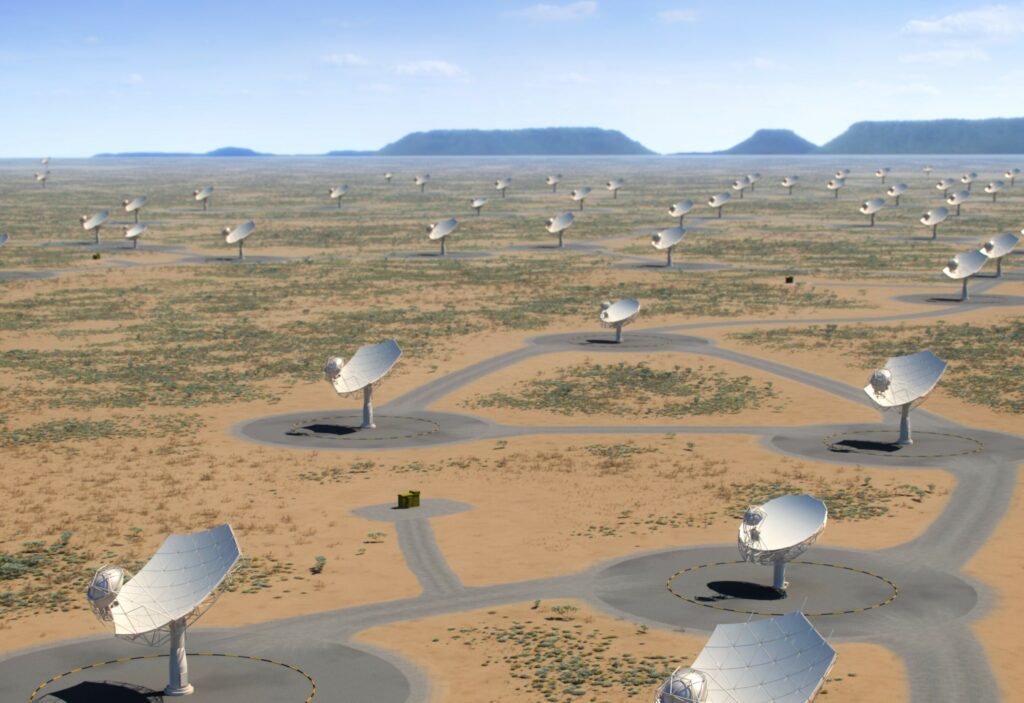For nearly 30 years, a radio telescope system which could be the world’s largest one yet, was kept in a conceptual stage. However, on 1st July 2021, the construction activity for the telescope got a green signal at last. Referred to as the ‘Square Kilometer Array Observatory (SKAO)’, the telescope system consists of about 200 large dish receivers in South Africa and 1,30,000 small antennas placed at different location in Western Australia. It is stated to be ten times more powerful than any of the present day telescopes used for unfurling the mysteries of the universe.
The two telescopes of the SKAO will become the largest and the most complex networks of radio telescopes built to date for delivering fascinating scientific discoveries. The world’s largest radio telescope, SKAO, will help us in exploring unknown fields of science and understand the fundamental processes in a better way. These involve how the formation and evolution of galaxies occurs, how basic physics works in extreme environments, and how life originated in the universe. The project is estimated to cost about $2 billion and will become a reality by 2029. Though the completion date of construction is in 2029, the telescopes will become functional from 2024 and will live on to help us for about 50 years.
The radio telescopes will be able to process radio signals in the frequency range between 70 MHz to at least 25 GHz. The system will have a total collecting area of one square kilometer. It will be operated from two continents via SKA-Mid array placed in the Karoo desert in South Africa with 197 dishes, each 50 feet in diameter, while the SKA-Low array will listen to lower frequencies, with its network of 1,31,072 antennas, located in Western Australia.
The telescope is being built as a collaborative efforts between Australia, China, Italy, the Netherlands, Portugal, South Africa and the United Kingdom. Nations like India, Canada, France, Germany, Spain, Sweden, Switzerland, Japan and South Korea are are contributing in the design of the telescopes.
